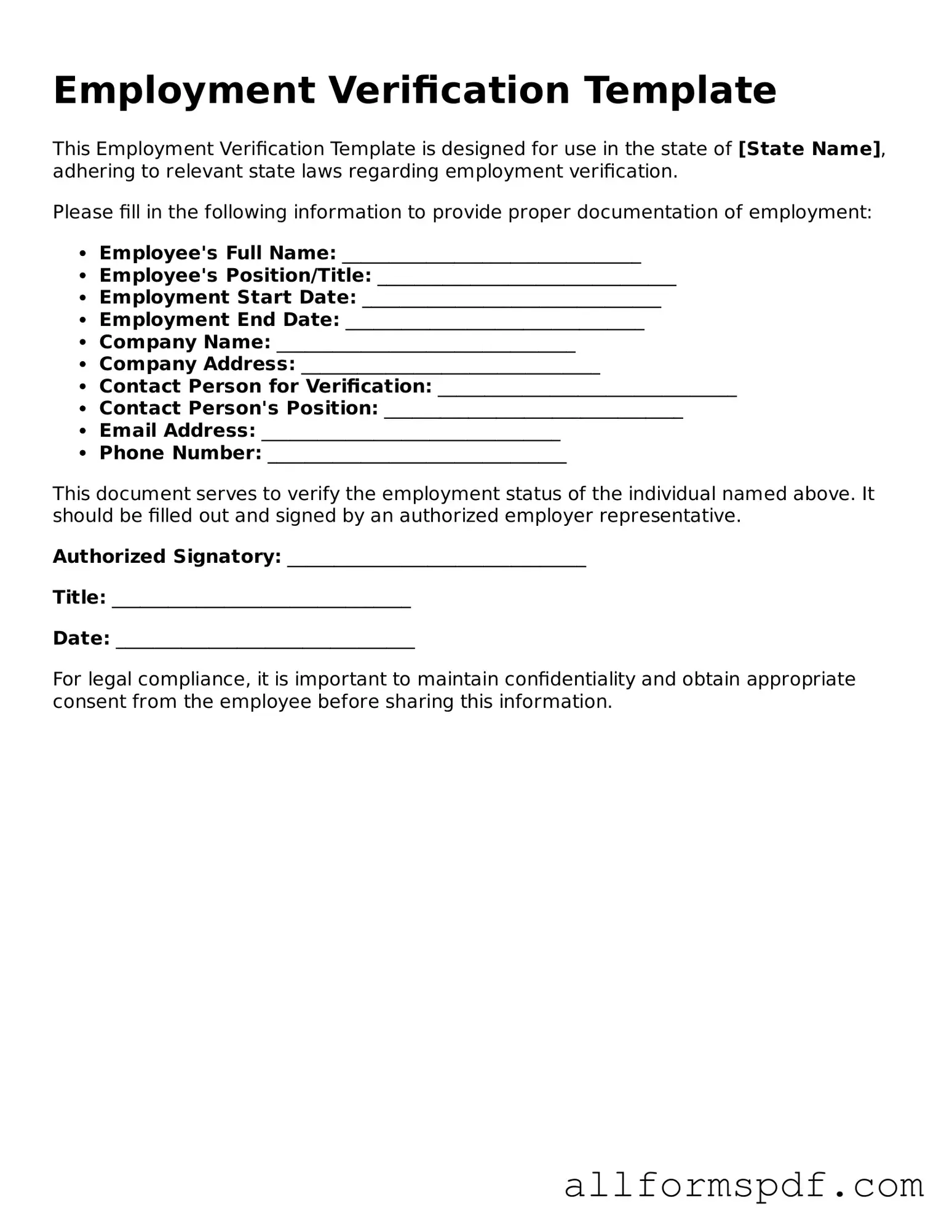Printable Employment Verification Form
The Employment Verification form is a crucial document used to confirm an individual's employment status, job title, and salary information. This form plays an essential role in various processes, including loan applications and rental agreements. Understanding its purpose and how to complete it can help ensure a smooth verification process.
Create My Employment Verification Now
